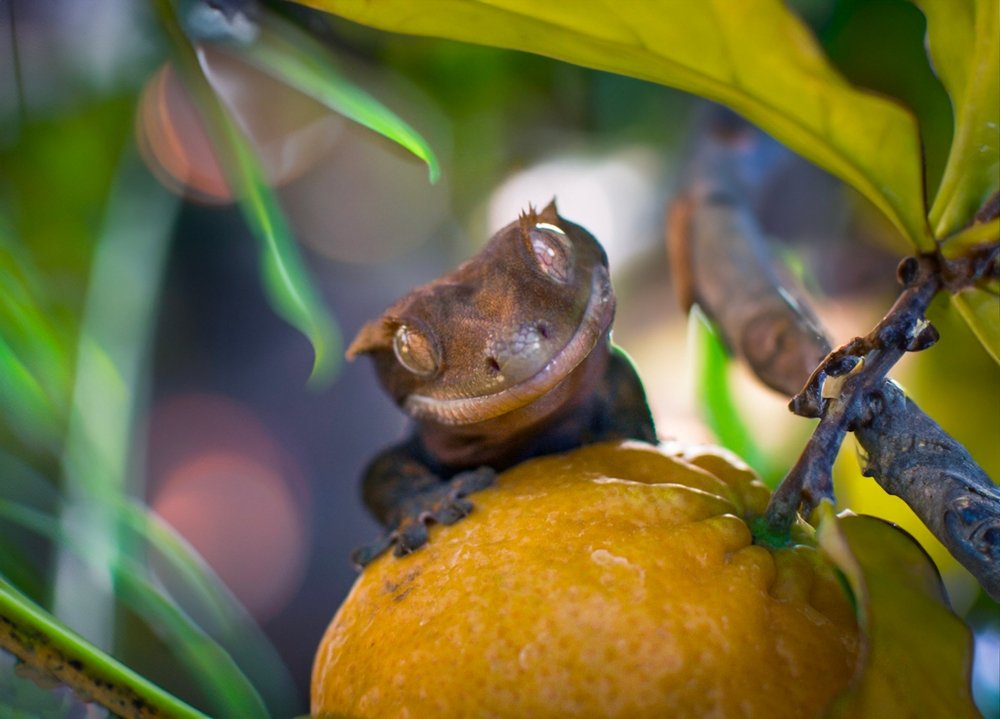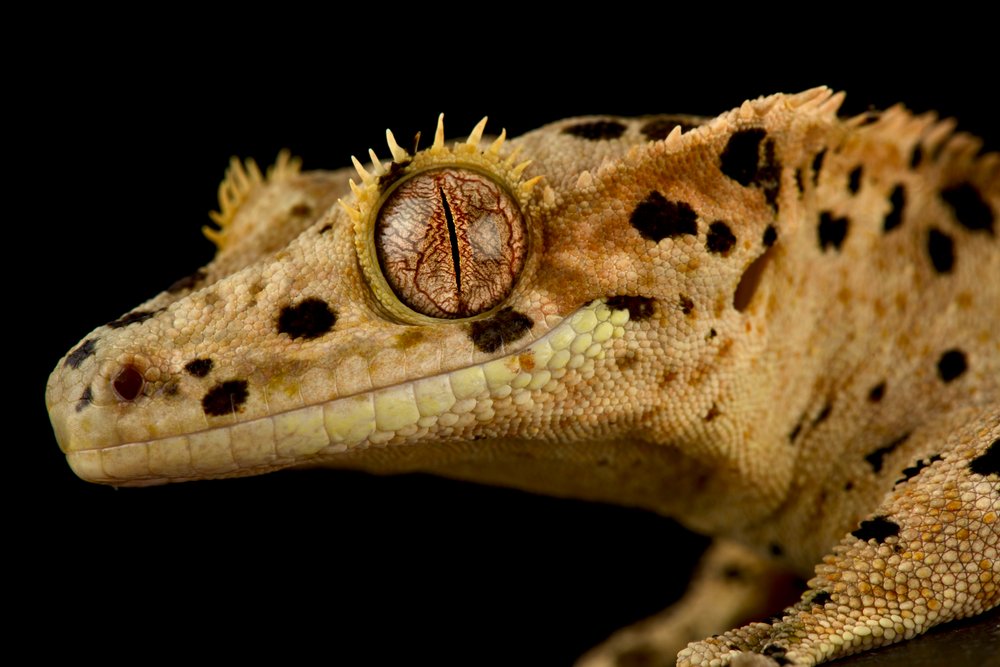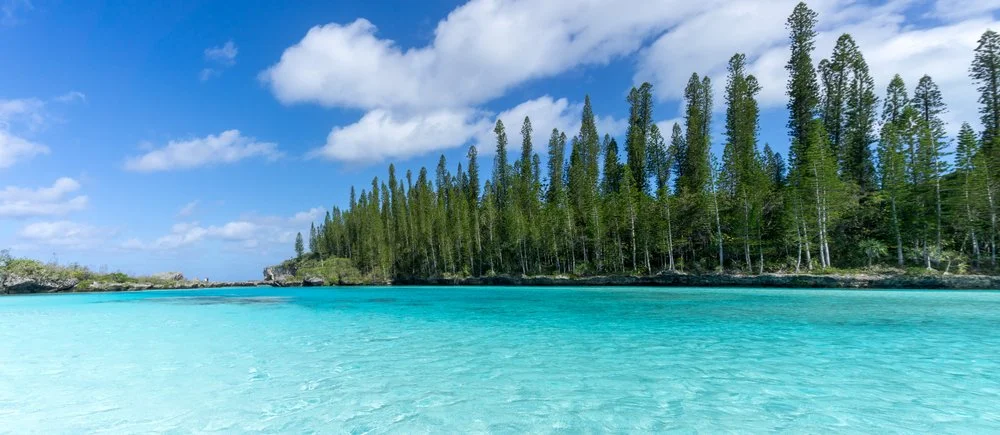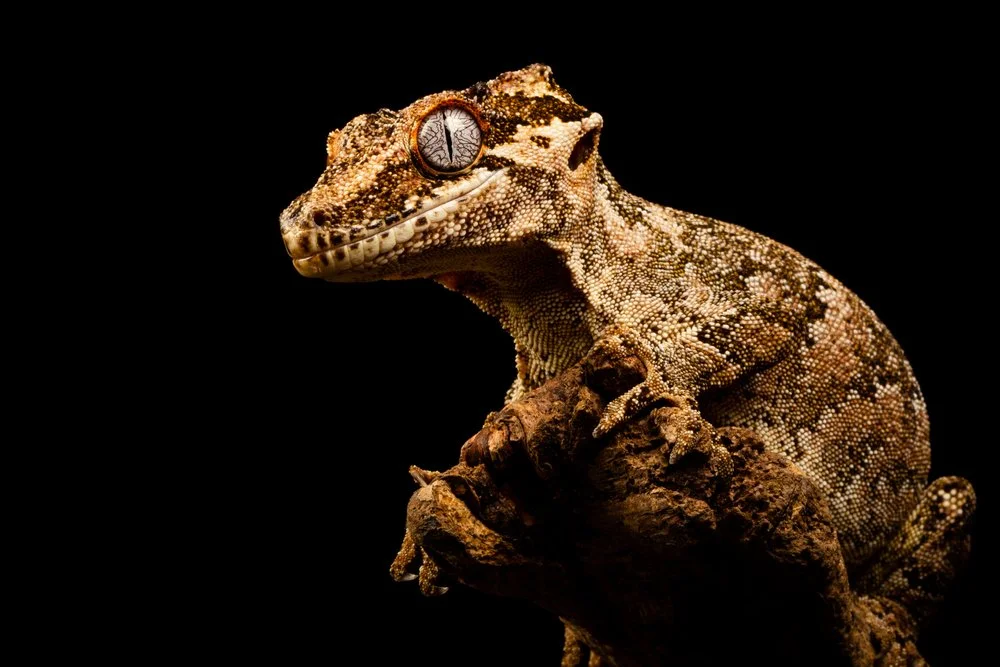Crested geckos and their island-dwelling cousins have become a popular sight in the UK pet trade. Their striking appearance, docile nature and manageable diet requirements make them an ideal first reptile. Previously, housing an arboreal gecko from a remote tropical island in the Pacific would be considered a challenge, but with scientific breakthroughs igniting an exciting field of product development, recreating New Caledonia in our living rooms has never been so accessible.
Island Paradise
Located between Australia and Fiji in the Southwest Pacific Ocean, New Caledonia is exceptionally remote. As a French colony, the 280,000 residents of New Caledonia are considered French citizens and vote for the President of France. The archipelago is broken into three separate provinces across a handful of islands. These islands include Grande Terre (the largest island), The Loyalty Islands, the Chesterfield Islands, the Belep archipelago and the Isle of Pines.
New Caledonia has some of the richest biodiversity per square km in the world. Despite being less tropical than other island nations in the region, New Caledonia still has two distinct seasons. The ‘dry’ runs from May until October, whereas the ‘wet’ runs from November to April. During the height of the wet season, sunlight can drop to just 5 hours per day and average between 18°C-22°C, whereas the dry season is much closer to around 8 hours per day and averages between 24°C – 28°C. Of course, this will vary across locations and altitudes.
Gecko Haven
Islands are often home to some of the most unique animals on the planet. Just like Madagascar’s rich spectrum of day geckos, New Caledonia is home to its own group of geckos with striking appearances. From the mossy prehensile-tailed gecko with its impeccable camouflage to the cryptic Bavayia genus and its spectrum of recently discovered species, New Caledonia’s herpetofauna is obscure and mysterious.
The slightly less mysterious, but equally obscure Rhacodactylus genus makes up some of the oddest-looking lizards in the world. The gargoyle gecko (R. auriculatus) and the New Caledonia giant gecko (R. leachinaus) are both exceedingly popular species within the pet trade. However, after being reclassified from Rhacodactylus ciliatus to Correlophus ciliatus, the crested gecko is truly in a league of its own. Now a popular sight in pet shops across the globe, this gecko exhibits a whole list of traits desirable in a pet lizard.
Species in the trade
Crested geckos and their New Caledonian cousins are reasonably new to the trade considering their immense popularity. This is partly because they are extremely hardy, have relatively low maintenance costs, eat frugivorous foods and breed readily. However, a constantly-evolving “morph” market has also accelerated the popularity and availability of crested and gargoyle geckos. Multiple “morphs” are now available including “dalmation” with increased spots, “flame” with red patterns, “Lilly white” with increased white colouration and “harlequin” that has more strongly-contrasted colours. There are also a myriad of names for specimens of gargoyle geckos with more orange, black or red in their skin colour/patterns. Crested geckos make excellent introductory pets, meaning they are often a first project for prospective breeders. This, combined with a reasonably high demand and the allure of making financial gain from producing the next “high end morph” means there are a lot of people breeding crested geckos. This cycle has allowed a species that is Threatened in the wild and previously unheard of in captivity, to become one of the most well-known geckos in the hobby in less than two decades.
Here comes the sun
Exotic pet owners, from reptile keepers to parrot enthusiasts know the importance of UVB for good animal health. However, understanding the requirements of each species presents itself as an even greater challenge. Therefore, the industry is currently building on the ‘Ferguson Zones’ model which relates a reptile’s basking behaviour to the correct level of UVB output from artificial lighting. This model allows crepuscular animals such as the crested, gargoyle and New Caledonia giant geckos to receive less than 1 UVI (Ferguson Zone 1), simulating the levels they would be typically exposed to in the wild.
Even though crested, gargoyle and leachianus geckos are all nocturnal, they will still undoubtedly have some relationship with the sun. It is therefore beneficial to provide UVB that the animal can hide from, than not provide any UVB at all.
Peter Blake, Marketing Executive at Reptile Systems has been in herpetoculture for 40 years and believes the Ferguson Zones concept will encourage keepers to provide beneficial UVB for crepuscular species that are sometimes neglected from the wider conversation. He explained: “Any animal that lives outside will benefit from the mimicry of natural sunlight. That animal’s relationship to this may just be anything from synchronising its circadian rhythm to full dependency on the heat, light and ultraviolet the sun provides. Even animals that live at the deepest depths are indirectly affected by sunlight in some way. UV also has an impact on the way we keep and raise insects and improvements can be found in the calcium values just by keeping them under good-quality light for a few weeks before feeding them to an animal. With some good quality gut-loading and some UV lighting, the insects can be much more nutritious.”
Land of the Giants
The New Caledonia giant gecko is the largest gecko in the world. With males reaching 36cm in length and weighing between 227 and 350 grams, these giants can be distinguished from their slightly thinner female counterparts. Although not as popular as the crested geckos, ‘leachies’ have been in the hobby for several years now. There used to be several subspecies of “leachie” but these are now all considered one species, although it is possible to source specific “lines” that have characteristics of the formerly recognised subspecies. Each island in New Caledonia that is inhabited by New Caledonia giant geckos has an influence on how the population looks. Smaller islands often host smaller animals. Islands with thicker and larger vegetation also typically host more distinctly patterned specimens. In this case, breeding specific localities is a far more popular project than the “morphs” that are associated with crested and gargoyle geckos.
Leachies can make very appealing pets for those with enough space to house them appropriately. Their easy care and stunning appearance make them suitable for reptile owners looking for a larger pet. Crested geckos are generally more tolerant to handling than leachies, although leachies can be extremely docile. Being the largest geckos in the world, a leachie is still capable of a nasty bite and should only be kept by a confident keeper. Those looking for an impressive, easy-to-care-for animal can find great joy in owning a New Caledonia giant gecko, but crested geckos will inevitably be the better choice for first-time keepers or young owners.
Going Gothic
The gargoyle gecko gets its name from the tiny cranial bumps which resemble horns on the animal’s head. However, their huge stone-coloured eyes and mossy appearance certainly reinforce their gothic persona. An aesthetically diverse species, gargoyle geckos can vary drastically in colouration and patterning from drab reticulated browns to vibrant red stripes. Of course, captive-bred specimens are likely to be more colourful than their wild relatives as demand for the visually striking animals continues to increase.
Gargoyle geckos should be kept almost identically to crested geckos. A naturally planted arboreal enclosure with a temperature gradient reaching up to 24°C is perfect. Low levels of UVB are encouraged and experimenting with diet mixes and live foods will help the keeper formulate the best diet for their lizard. Just like cresties, gargoyle geckos will drink from a water dish but spraying the enclosure will be their main source of hydration so this needs to be done daily. The most common issue with cresties, leachies and gargoyle geckos is diseases often caused by unclean environments. Ensuring a healthy bioactive or a squeaky clean naturalistic set-up will make caring for these geckos relatively simple.
Fruit Caledonia
Crested geckos are naturally omnivorous, feeding on a range of fruits, insects and even other reptiles. A study conducted on wild crested geckos in 2007 by French researchers led by Herve Saint-Dizier in New Caledonia found that the stomach contents of wild crested geckos contained the following matter:
Plants: Pollen aggregates 10.3% Soft seeds 1.8% Berries 11.7% Fruit juices 7.52%
Insects: 49.6% (Coleoptera 9.45% Caterpillars and butterflies 7.52% Diptera 3.12% Roaches 6.2% Orthoptera (crickets and locusts) 21.6%
Vertebrates: Smaller lizards (including their own young) 11.4% Other vertebrate prey 8.68% (of which young rodents: 6.42%)
Providing an omnivorous diet in captivity can be extremely rewarding as a keeper. Many tortoise and bearded dragon owners will take great pride in the meals they prepare for their animals and crestie owners are no different. Luckily, simulating the pollen aggregates and fruit juices of the unique New Caledonian flora has become much easier with the popularity of premixed diets and jelly pots.
Owen Chennery, Product Development Specialist at Blue River Diets said: “One of the major appeals of crested geckos is their omnivorous diet. As the seasons change, wild cresties will adapt their diet from over-ripe fruit to berries and saps, to insects as the seasons change. We’ve managed to combine all these elements, along with bee pollen and honey into five formulas at Blue River Diets. This means that all keepers have to do is mix one of the powders with some water and offer it up to their gecko to ensure that their gecko has everything they need. The additional minerals, vitamins and calcium that are already present in the foods, means that keepers don’t even have to worry about adding more supplements or dusting the food with calcium. However, it is still important to give cresties some live prey to hunt. Adding a few locusts, crickets, roaches etc occasionally, will ensure that the gecko is well exercised as it chases the insects around the enclosure.”
Recreating the wild
New Caledonia’s flora has the highest levels of endemism in the world, with three-quarters of the flora on these islands found nowhere else on the planet. As such, replicating a perfect slice of New Caledonia is difficult, but tropical ferns provide a great starting point. Crested birds nest ferns (Asplenium antiquum) have broad leaves and provide great climbing opportunities when planted high in the terrarium. Rabbit foot ferns (Davallia .sp) also create a brilliant Jurassic look and can be planted into the sides of a bioactive enclosure to provide hiding space.
Recreating the tropical forest environments of New Caledonia is extremely straightforward with new products in the hobby. Of course, a bioactive set-up can be extremely rewarding and require a different approach, but species-specific products have surfaced in the market in recent years. Jamie Girling is Product Development Specialist at ProRep and created Crestie Life, a substrate designed specifically for crested geckos. He told us: “Humidity is really important for crested geckos so designing a substrate that releases humidity gradually was crucial. Egg laying is also important for animals that would typically dig to lay their eggs. If an animal can’t find a suitable place to lay their eggs they can become egg-bound, which is potentially problematic for the animal. But really, Crestie Life came about to move people away from the standard of beech chip or bark chip which would never occur naturally in their environment. Also, people won’t always want to do a Bioactive set up. Obviously, it costs a lot more to create a more complex environment, so the Life series basically replicates some key environmental factors at a lower cost. What’s key for crested geckos is high humidity and Crestie Life was designed with different sized particles to slowly release that moisture over time, contributing to a steady humidity.”
In the wild, many of the New Caledonian gecko species would rarely visit the forest floor. However, our captive environments create new challenges and giving the animals as much space and environmental enrichment as possible is key to overcoming these. Creating a drainage layer with a small reservoir of water beneath will provide a steadier humidity level than spraying the enclosure.
Next Caledonia
Between 2013 and 2019, New Caledonia saw a 17.5% increase in tourism which made 2019 the busiest year on record. What that means for the flora and fauna is unknown. But, with ecotourism taking centre stage in the travel industry in recent years and New Caledonia’s biodiversity already internationally recognised, we may find ourselves learning more and more about these cryptic lizards. As for our much-loved pets in the private sector, the future seems very bright. Captive-bred animals are abundant, meaning it is easier than ever to source these animals responsibly. Advancements in product development are making husbandry much easier and we can expect the crested, gargoyle and New Caledonia giant geckos to be with us for many years to come.
If you enjoyed this article, why not sign up for a FREE digital subscription to EK magazine here.










